COVID-19 in Ontario: 7 Principles for a Safe Journey to Normal
Other countries are returning to normal, other provinces are returning to normal... When is Ontario returning to normal? Will we return to normal or...
7 min read
Dr. Joanne Baldos and Dr. Adam Szymczak : Feb 10, 2022 4:16:12 PM

When it comes to catching COVID, people are safer at a dental office than in their own homes!
Every day, people are infected with COVID from the people that they live with or that visit them.
There have been COVID outbreaks in hospitals, grocery stores, gyms, long-term care homes, schools, factories, warehouses and hotels BUT not one outbreak at the dentist!
A dental office is the only place that you can go to in the middle of the pandemic AND remove your mask AND be near someone else. And yet there have not been any cases of transmission to or from a patient in a dental office in all of Canada! NOT even one case!
Clearly, dental offices are doing something different to keep everyone safe. Similarly, anyone can be safe during a pandemic, just follow the steps that Smile Care Dental has been following throughout the pandemic.
Dental offices will not close again during this or any other future pandemic as they have proven to be the safest place to be during a pandemic. Even during the lockdown and stay-at-home orders, dental offices were allowed to stay open.
It was a mistake for Public Health to close down dental offices during the first wave of COVID in March 2020. About a month later Public Health corrected their position and dental offices have been allowed to be fully open during the even bigger second, third, fourth and fifth waves.
Dentists and dental team members are experts in infection prevention and control, it has been part of the daily routine in dental offices for decades. Even before the COVID pandemic, all team members within a dental office practiced "universal precautions", which is an assumption that all people are potentially contagious.This assumption leads to ongoing precautions being taken to prevent transmission continually throughout the day, every day.
Understanding and following the same steps that Smile Care Dental takes to keep our dental office a "COVID-safe zone" can keep anyone safe during face-to-face interactions.
In fact, the shutdowns and stay at home orders could have been avoided if everyone was ready, willing and able to follow the SIX steps below:
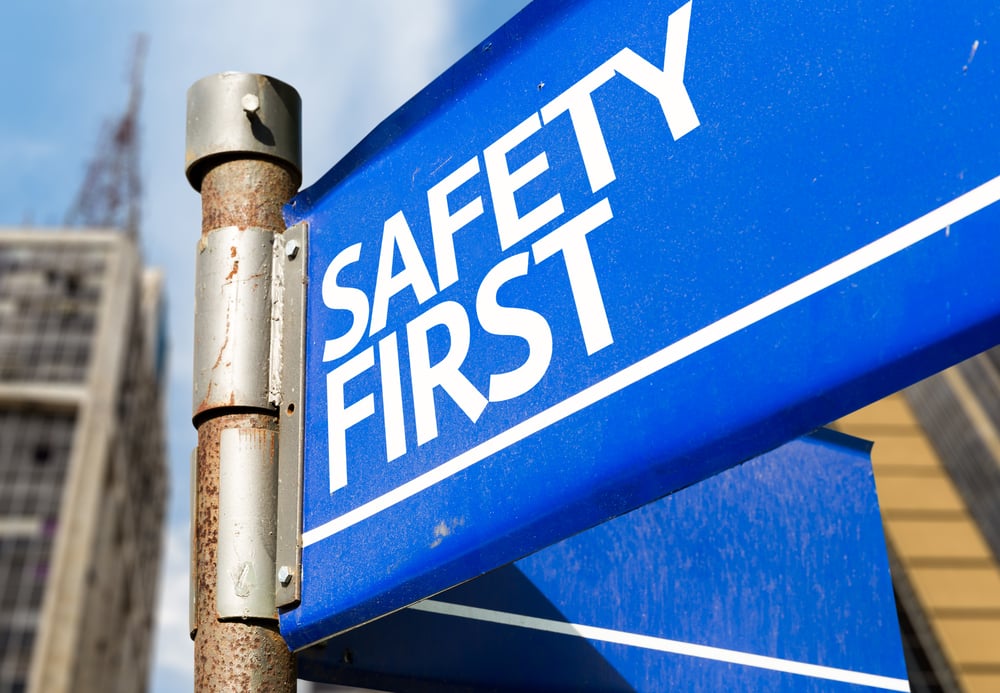
This is the most important step of all the steps since the most common way of getting COVID is a face-to-face interaction with a COVID-positive person. If you limit face-to-face interactions with "high risk" people your risk is significantly reduced.
If you have been to our office in the past 2 years, you have filled out the "COVID-19: Patient Self-Screening Form". All staff and all patients must fill out this form at every visit. It is important to note that the questions refer to the past 14 days (more recently the 5-10 day window has been used).
You can use the same form to identify people that possibly have COVID. In a nutshell, if a person answers YES to any of the questions then they are at an increased risk of having COVID and it would be wise to delay face time with them until they are able to answer NO to all the questions; that's usually about 14 days away. One should consider any chronic ailments that a person has that overlap with symptoms of COVID; for example, someone that has asthma may have difficulty breathing, but it is not related to COVID.
Many people, especially early on in the pandemic, have had the misconception that "I don't know or see any sick people, so I am safe" but the truth is that many people are infectious but do NOT exhibit any symptoms and hence you will not know that they are infectious:
1) Asymptomatic transmission refers to the transmission of the virus from a person who has the virus but will never get sick
2) Pre-symptomatic transmission refers to the transmission of the virus from a person who has the virus and will get sick but is not sick right now
Hence, we apply the "universal precautions" approach, which means we assume everyone is potentially infectious. If you are going to see people face to face you should also assume that they are infectious and screen them and follow the remaining steps below.
Someone that loves you or cares about you would not infect you knowingly. However, a person is infectious before they develop symptoms as such they can infect you unknowingly. You are more likely to get infected by someone you trust and love than anyone else because you spend considerable time with them in close contact.
Stay home if you are sick, stay isolated until you are no longer infectious.Let your close contacts know that you are sick so that they can isolate to prevent further spread.

If you double the amount of time you spend with someone face to face, you double your chances of catching COVID.
Many people have the misconception of "I already saw him/her and I did not get COVID, so they are safe." The truth is that if you double your time spent with a person you will double your risk. The last time you saw the person they may have not been contagious and now they may be.
This is why when you arrive for your dental appointment, you wait in the car until we are ready for you. It minimizes your time in the office.
Keep the time of face-to-face interactions to a minimum to minimize the risk.
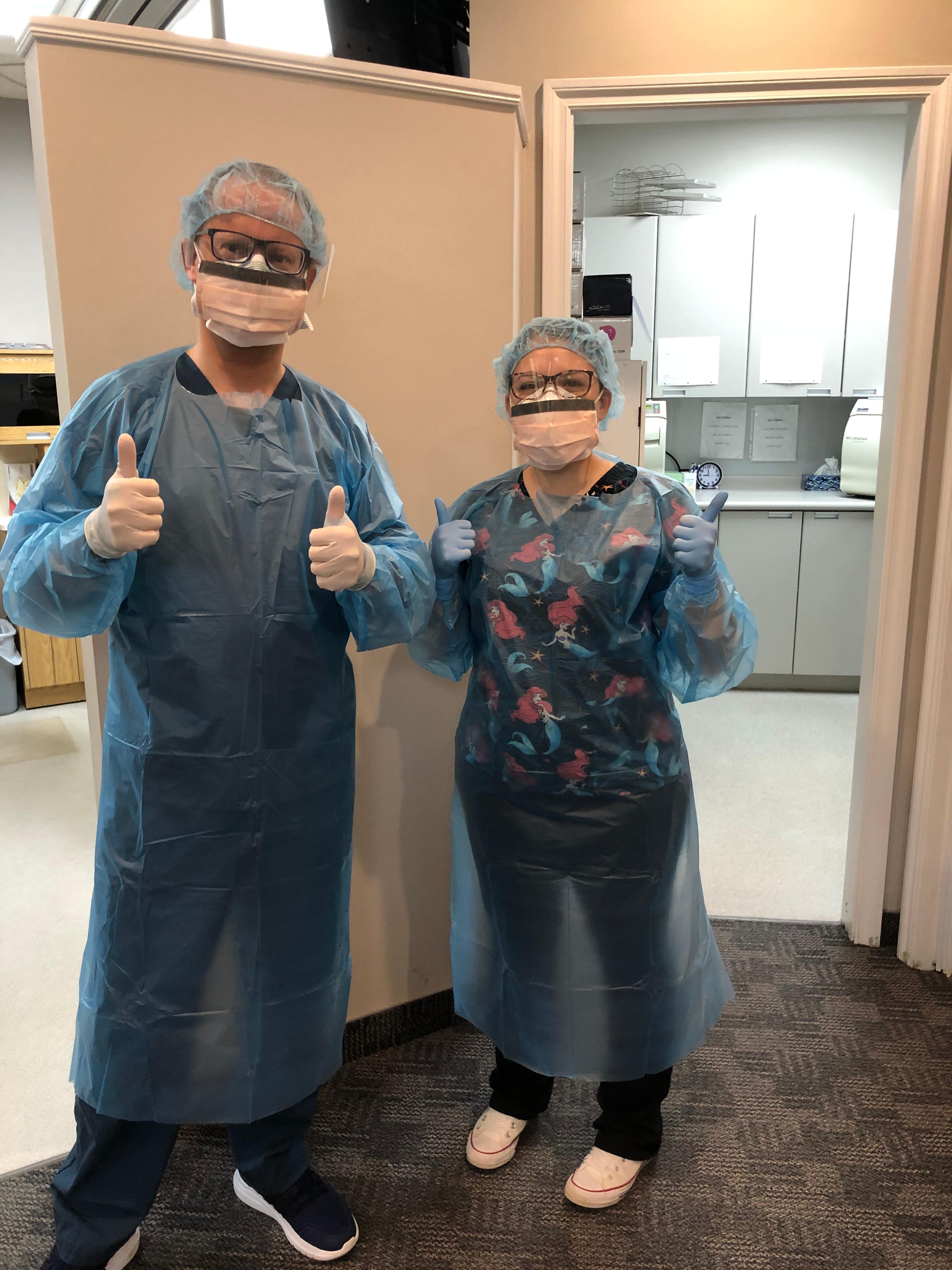
When someone who has COVID-19 coughs, sneezes or speaks they release droplets of infected fluid from their lungs through the mouth and/or nose. If you happen to be close to someone who has COVID-19 and breathe in these droplets before they fall to the ground you might become infected with the virus, this is the most common way that the virus spreads. Another pathway of transmission is when the infected fluid lands on your eyes, nose, or mouth. ( this is the DIRECT route of transmission)
Physical barriers such as plexiglass and personal protective equipment such as masks and face shields significantly reduce the chance that the droplets of infected fluid will reach your lungs, eyes, nose, or mouth.
Physical distancing works well in reducing the risk of catching COVID as the concentration of viral particles in the air decreases significantly over distance away from an infectious person.
Not all masks are created equal! The better fitting the mask is and the greater the filtration level of the mask the more protective it is. The type of mask you wear matters, properly fitting respirators provide the highest level of protection.
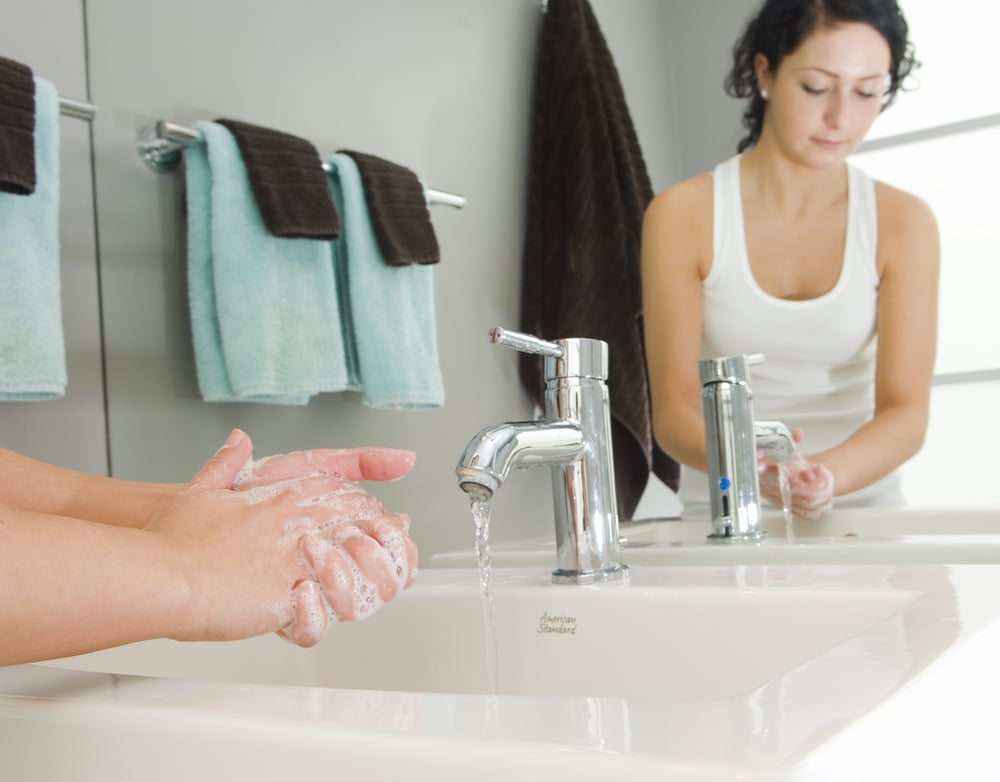
You can NOT get infected through your skin, even if you get the virus on your hands as long as you DO NOT TOUCH your face you will NOT get infected. Avoid touching your eyes, nose, and mouth with unwashed hands.
People unknowingly touch their faces on average 23 times per hour and about half of all face touches involve touching eyes/nose/mouth. As such, wash your hands with soap and water for at least 20 seconds after touching publicly touched items or surfaces. IF soap and water are not accessible use an alcohol-based hand sanitizer.
Do not take the technique of washing hands for granted. Many people neglect the fingertips, thumbs and the areas between fingers. Many people do not spend enough time washing their hands: at least 20 seconds of contact time between soap and each part of the hand.
Patients are instructed to sanitize their hands upon entry and exit from our office, similarly, people entering and exiting your home should sanitize their hands.
When someone who has COVID-19 coughs, sneezes or speaks they release droplets of infected fluid from their lungs through the mouth and/or nose. These large droplets are heavy, do not travel far and quickly fall to the ground.
These large droplets infect the surfaces where they land and may remain infectious for days if not sanitized. You can get infected IF you get the virus on your hands AND then you touch your eyes, nose or mouth which are pathways to the lungs. The coronavirus infects the lungs (respiratory system) as the virus has cell receptors for lung cells. ( this is the INDIRECT route of transmission)
Between patient visits, all touched surfaces have always been sanitized between patients. All touched surfaces throughout the office get sanitized multiple times a day: door handles, front desk, waiting room chairs, washrooms and kitchen.
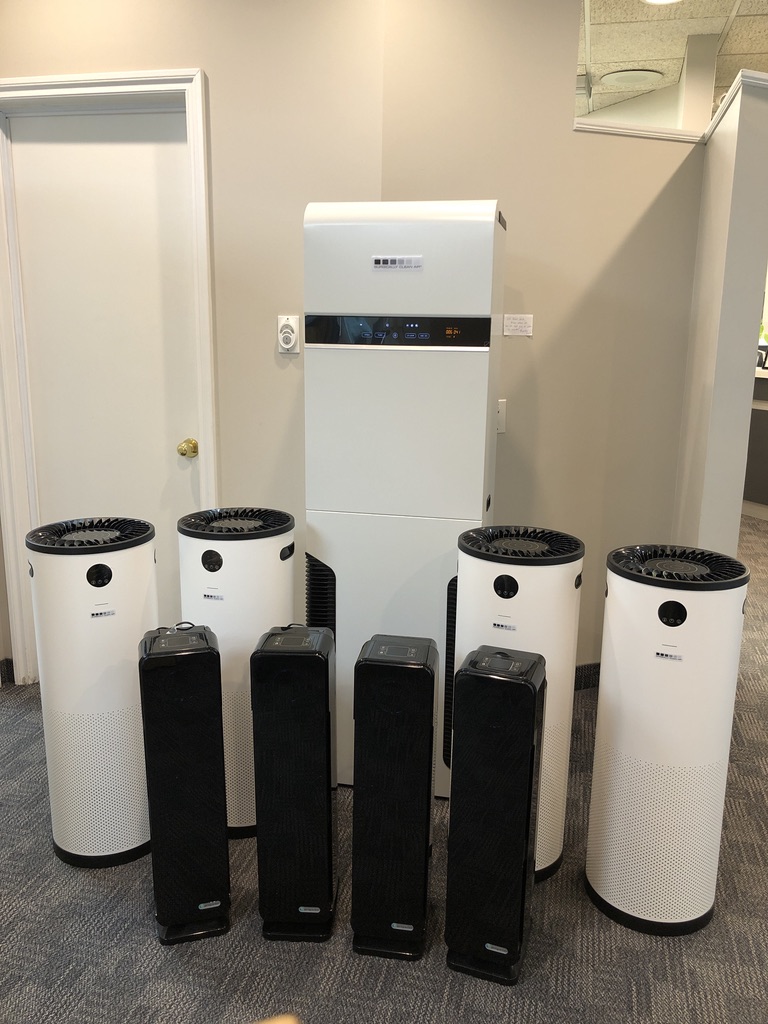
( Air sterilizers at Smile Care Dental sterilize all the air every one minute!)
When someone who has COVID-19 coughs, sneezes or speaks they release droplets of infected fluid from their lungs through their mouth and/or nose. The smaller droplets can remain in the air for a prolonged period of time. Another person can inhale these infectious particles that pass through the air and get infected.
Being outside has less risk of infection because the infectious particles get diluted out by the natural flow of air. Increasing the introduction of outdoor air into an indoor setting, by for example opening windows or doors, also dilutes the presence of any particles including viral particles. Poorly ventilated indoor settings have the greatest risk of transmission as such good ventilation is critical in these settings.
Similar to masks, different air filtration units have different filtration levels. Only a TRUE HEPA (or higher) filtration units should be used if one wants to make a difference in preventing transmission of the virus. Furthermore, the amount of flow of air through the filtration units called clean air delivery rates (CADRs) is critical, the higher the better!
Early in the pandemic in 2020, we installed HEPA and medical-grade HEPA air filtration units. Every 1 minute all the air within each room where patients receive treatment gets filtered down to the size of a viral particle! Furthermore, these units have ultraviolet germicidal irradiation (UVGI) using ultraviolet (UV) energy to kill viral, bacterial, and fungal organisms.
CONCLUSION
Every day we take risks and implement safety measures without giving it much thought. For example, about 1 out of 20,000 Canadians die every year in car accidents; that's about 20,000 people every year. :( Driving is dangerous, we may die, but we do it anyway because there is a benefit to it like going to work or visiting a friend. Driving in bad weather is more dangerous, so we drive slower to reduce the risk of a car accident.
Most people want a simple list of do's and don'ts to "stay safe" during a pandemic. Unfortunately, it's not that simple, it's not helpful to think safe or unsafe. It's not black and white! It's more helpful to think of managing risk. The higher the risk the more layers and/or better layers of protection one should have in place to stay safe. The higher the risk the more of the above 6 steps one should follow to stay safe.
There is some level of risk in all that we do, for example, a cotton swab in the ear can kill!
Somehow, "avoid COVID-19 at all costs" became the mantra over the course of the pandemic. This black and white approach has had devastating consequences on people's mental health as well as dental health.
The layers of protection that Smile Care Dental has used during the pandemic have proven to eliminate the risk of COVID-19 transmission. The same layers of protection can keep everyone safe during face-to-face interactions. This is what it takes to operate safely, but the 6 steps must be practiced consistently and without compromise.
In fact, the shutdowns and stay-at-home orders could have been avoided if everyone was ready, willing and able to consistently and uncompromisingly follow the 6 steps above.
In the best interest of your health and well-being,
Dr. Joanne Baldos and Dr. Adam Szymczak
P.S. People that you know will benefit from this information. Please share this information with your family, friends, and colleagues. (the best way to share is to email people with the link to this page OR clicking the social sharing links at the top of this page)
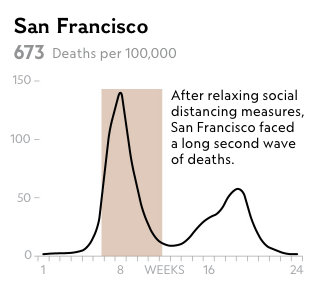
Other countries are returning to normal, other provinces are returning to normal... When is Ontario returning to normal? Will we return to normal or...

The number of people that will die in Canada is within OUR control!!! If we ALL act TOGETHER with compassion towards each other, the impact on YOUR...

Relationship between Oral Health and COVID There is a link between oral health and overall health! For example, COVID-19 patients with gum disease...